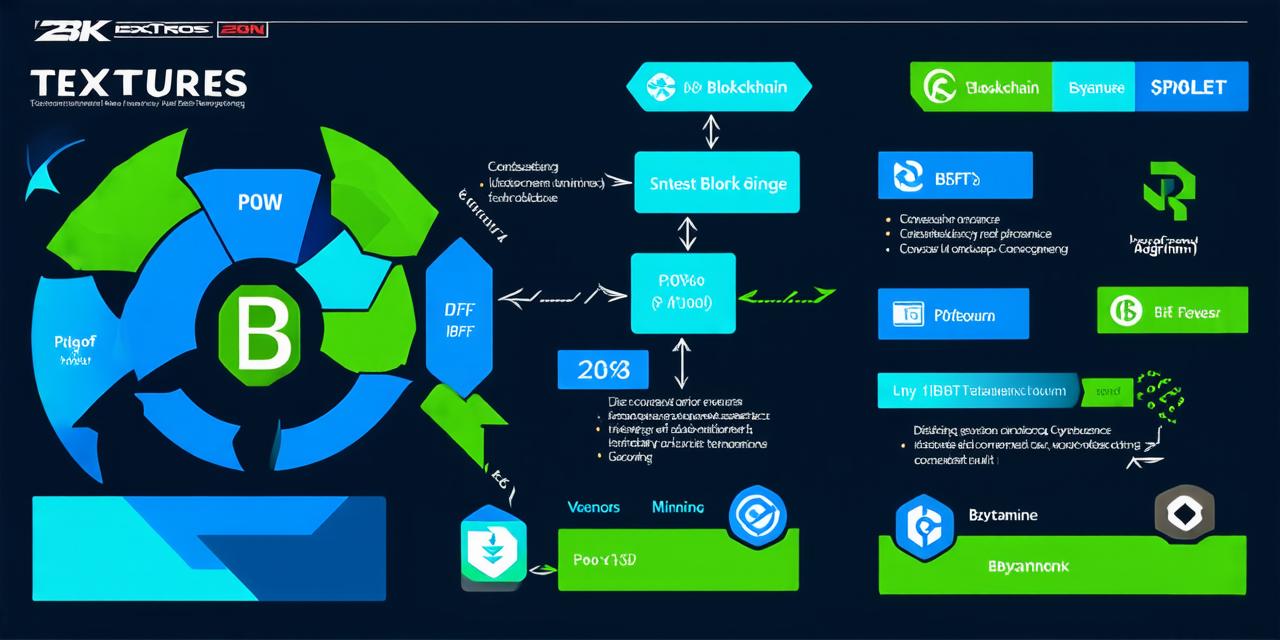<!— Blockchain technology has revolutionized the way we store and transfer data across networks. At its core, a blockchain is a distributed database that is managed by a network of computers, which work together to maintain the integrity and security of the data stored on it. One of the key components of a blockchain is the consensus algorithm, which governs how nodes in the network agree on the state of the ledger.
In this article, we will explore what a consensus algorithm is in blockchain, its different types, their strengths and weaknesses, and how they are used to maintain the integrity and security of the data stored on the blockchain. We will also look at real-life examples of consensus algorithms in action, and discuss their potential implications for the future of blockchain technology.
What is a Consensus Algorithm?
A consensus algorithm is a set of rules that govern how nodes in a distributed network agree on the state of the ledger. It is essentially a mechanism that allows multiple parties to come to an agreement on a single version of reality, without requiring a central authority to dictate what that reality should be.
The purpose of a consensus algorithm is to ensure that all nodes in the network have access to the same data at the same time, and that any changes made to the ledger are consistent across all nodes. This is important for maintaining the integrity and security of the data stored on the blockchain, as well as ensuring that transactions can be processed efficiently and quickly.
Types of Consensus Algorithms
There are several different types of consensus algorithms that are used in blockchain technology. These include:
Proof of Work (PoW)
Proof of Work is one of the most widely used consensus algorithms in blockchain. It requires nodes in the network to solve complex mathematical problems, known as “mining,” in order to validate transactions and add them to the ledger. The first node to solve a problem is rewarded with new cryptocurrency, which incentivizes competition among nodes to be the first to solve the problem.
The strength of Proof of Work lies in its ability to ensure that only legitimate transactions are added to the ledger. However, it can be slow and energy-intensive, as mining requires a significant amount of computational power. Additionally, there is a risk of centralization, as nodes with more computing power may be able to dominate the network and control the validation process.

Proof of Stake (PoS)
Proof of Stake is an alternative consensus algorithm that is gaining popularity in blockchain technology. Instead of relying on mining to validate transactions, PoS uses a randomized selection process to choose nodes to validate transactions based on the amount of cryptocurrency they hold. This reduces the energy consumption and competition associated with mining, making it more environmentally friendly and efficient.
However, there are concerns about the potential for centralization in PoS, as nodes with more cryptocurrency may be able to dominate the network and control the validation process. Additionally, PoS can be vulnerable to attacks from malicious actors who hold a large amount of cryptocurrency and use it to manipulate the network.
Delegated Proof of Stake (DPoS)
Delegated Proof of Stake is an extension of PoS that allows for the delegation of validation responsibilities to elected representatives, known as “witnesses.” Witnesses are chosen through a voting process, and are responsible for validating transactions and maintaining the integrity of the ledger. This reduces the amount of computational power required to validate transactions, making it more efficient and scalable.
The strength of DPoS lies in its ability to balance the need for efficiency with the need for security. However, there are concerns about the potential for centralization, as witnesses may be able to collude or manipulate the network for their own benefit. Additionally, there is a risk of voter apathy, as witnesses may not be held accountable for their actions if they are elected through a flawed voting process.
Practical Byzantine Fault Tolerance (PBFT)
Practical Byzantine Fault Tolerance is a consensus algorithm that is designed to work in the presence of malicious actors who may attempt to manipulate the network.
